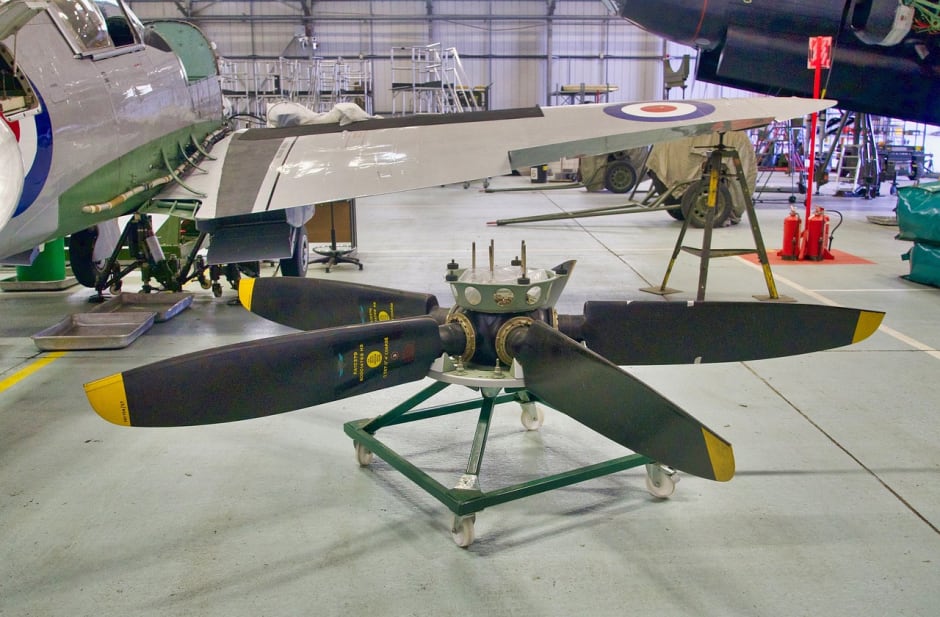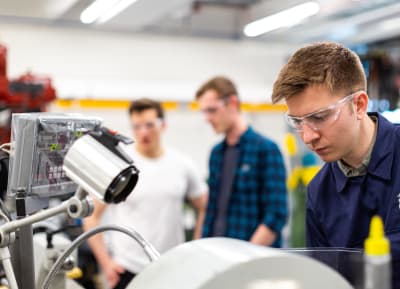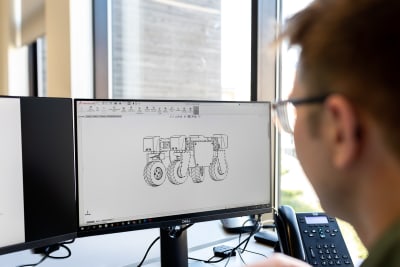Being an aeronautical and aerospace engineer is much the same as a layman. They both involve engineering, and they both involve the design and construction of vehicles that can fly. While we agree there is a substantial overlap between aeronautical and aerospace engineers, they are still wildly different professions.
This guide compares the jobs of aeronautical and aerospace engineers. It will be useful for those considering one of these jobs and provide general information for laymen who want to be better educated about the engineering world.
What is an Aeronautical Engineer?
The aeronautical engineering profession began when the Wright Brothers took flight in the 20th Century—well, technically. Since humans have been trying to design flying contraptions for centuries, aeronautical engineering began much earlier than this. However, most aeronautical engineers will tell you that the Wright Brothers gave birth to their profession.
Aeronautical engineering involves designing, engineering, and constructing all aircraft operating within Earth’s atmosphere. This includes everything from commercial aircraft you’ve undoubtedly flown on to military drones, weapons, satellites within the Earth’s atmosphere, light aircraft, and helicopters.
What Is an Aerospace Engineer?
An aerospace engineer will focus on machines that fly outside Earth’s atmosphere. This includes satellites (aerospace engineers designed the International Space Station), spacecraft, and satellites.
Of course, there’s a considerable overlap between an aerospace engineer and an aeronautical engineer. This is because aerospace engineering requires many of the same principles (since you must get those spacecraft out of Earth’s atmosphere first). Still, it is a highly specialized job that requires understanding concepts that the average aeronautical engineer wouldn’t need to use.
Aeronautical Engineer vs Aerospace Engineer: The Differences
As we said – at first glance, there’s not much difference between an aeronautical and an aerospace engineer. The core concepts are the same as both will require a solid understanding of aerodynamics, propulsion, and basic design (there’s a reason spacecraft look very similar to your typical aircraft – physics). However, they are two jobs, and a top aeronautical engineer typically wouldn’t work well as a top aerospace engineer (although sometimes things work in reverse).
This is where we’ll compare the two professions.
The Education
Both aerospace engineers and aeronautical engineers require a bachelor’s degree.
The degree will cover the math related to aeronautics, physics, and the basic elements of engineering. At this point, people will opt to specialize.
An aeronautical engineer will focus heavily on the design of modern aircraft. They’ll look at how to construct aerodynamic designs, the propulsion systems required to move an aircraft within the Earth’s atmosphere, the materials used for these vehicles, etc.
How aerospace engineering works will be dependent on the college/university. Many of the same principles in an aeronautical engineering course will be covered here. However, these courses will dive deeper into topics that aeronautical engineers wouldn’t need to know, e.g., how orbits work, developing systems to work in space, planning space missions, and more. You could say that an aerospace engineering course is much more in-depth, but it rarely takes longer than an aeronautical engineering course, at least at the basic level.
The Skills Required
You must be very smart to complete an aeronautical or aerospace degree. They both require a fantastic understanding of math and physics. You’ll also need a fantastic mind for analyzing problems.
The main difference will be understanding the essentials behind the method of flying in each form of engineering. While aeronautical engineering will require an understanding of aerodynamics, aerospace engineering requires a solid understanding of orbital mechanics (although the core aerodynamic understanding will also need to be there).
There will also be a difference in understanding the materials used in the design. Aerospace engineering requires using materials that can withstand breaking through Earth’s atmosphere, while aeronautical engineering does not. It just requires an understanding of the materials used on most aircraft.
Some would argue that aeronautical engineering requires much more in the way of problem-solving skills (since you’re aiming to essentially ‘reinvent’ the wheel in terms of the systems you’d be developing), while aerospace engineering requires more analytical skills, as you’ll be seen more as an ‘inventor,’ as you’re entering uncharted territory. Although, we would say that both jobs require both skills if you wish to thrive.
We will say that with aerospace engineering, you’ll find much more collaboration with other people. Aerospace projects tend to be huge, with hundreds of people working on some projects. Aeronautical engineering projects rarely get these large unless the development of a new weapon or type of aircraft is involved.
The Job Prospects
Aeronautical engineering and aerospace have strong job prospects. Neither industry is disappearing soon, and governments worldwide heavily fund both.
Some people will find it easier to obtain an aeronautical engineering job since there are more aircraft manufacturers around, and some of these roles are available at aircraft mechanics, airports, etc. The weapons industry also caters to these roles: satellite industry, etc. There are just more jobs.
However, that isn’t to say that aerospace roles are difficult to find. There are plenty of those, too, particularly when considering the rise of private aerospace companies. This is a growth industry, with multiple companies now developing spacecraft, satellites, and aerospace weapons systems. These roles are fewer, and you’d often need to move to specific areas if you wish to obtain them, but they are there. It is a huge growth industry, and a talented aerospace engineer will rarely struggle to find jobs in this sector.
Salary Expectations
The average salary is slightly higher because aeronautical engineers, particularly talented ones, are in greater demand right now. One study estimated that the average annual pay is $130,258.
The average salary for an aerospace engineer is $108,638.
That being said, there can be huge differences depending on your location. We also anticipate that the aerospace industry will get much bigger, and talented aerospace engineers will be in demand 5-10 years from now. Aerospace engineering could have very similar salary expectations to aeronautical engineers. However, you also must remember that being an aerospace engineer is seen as the ‘cooler’ profession, which may knock down salaries a little, considering so many people are currently studying for the role.
Conclusion
There’s a significant overlap when comparing an aeronautical engineer to an aerospace engineer. However, they are both in different roles, requiring very different skills. An aeronautical engineer focuses on aircraft and anything that flies within Earth’s atmosphere. An aerospace engineer will look at what will fly in space. People will often need to decide early which role is right for them. However, thankfully, there isn’t a wrong choice. Both roles are in demand, and the salary expectations are close. They both take the same amount of time to study for, too.





